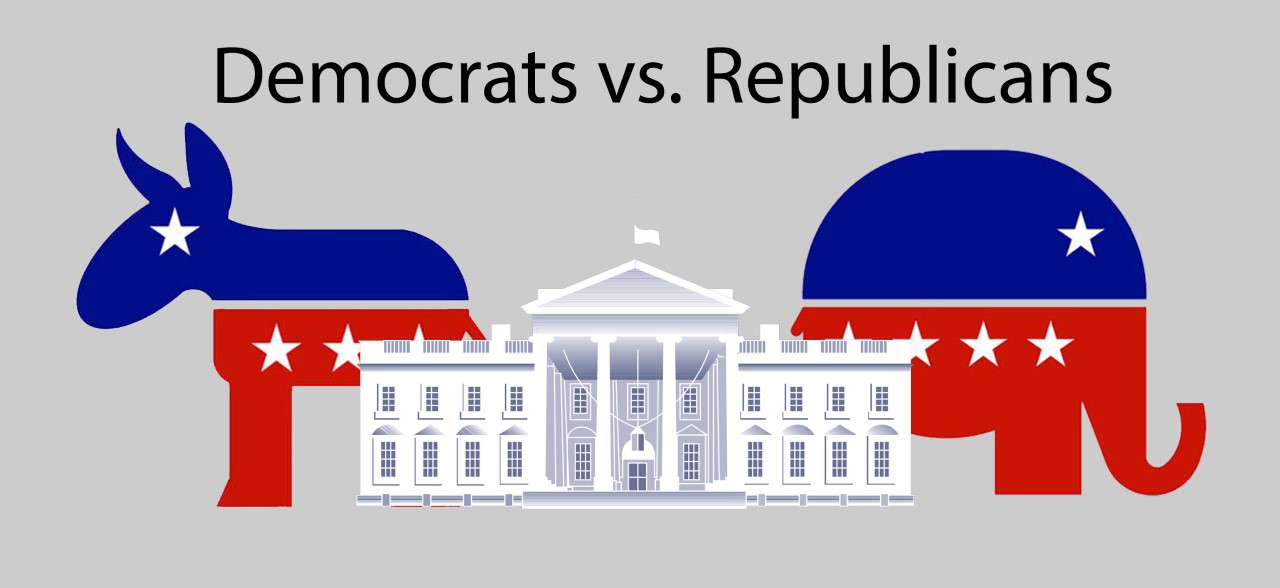US election is followed by people from around the world but the process of selection of US President is a bit difficult to follow. The below article compares India’s Political System with that of USA and tries to simplify the process of election of US President.
Difference between India’s & United States Political System:
There are 3 parts of modern State – The Legislature (makes laws/rules), the judiciary, and the executive ( implements laws). Now for India,
- Legislature: Lok Sabha, Rajya Sabha
- Judiciary: District Court, High Court, Supreme Court
- Executive: President, Prime Minister & Council of Ministers
In India, Parliamentary form of Government is followed where Executive is part of Legislature, that is, PM & Council of minister who execute government are also part of law making body Lok Sabha & Rajya Sabha.
In USA, the three branches of government are completely separate. The legislature is called as Congress (Senate & House of Representatives), Judiciary which includes independent system of courts, but executive is just one person – President. He/She takes all the government decision.
Before going into process of election, we need to understand one more thing, the party system of USA.
In India, we have multi party system, where anyone with support can form his/her own party & compete in elections. In USA, however, the system is different. USA has only two parties, Democrats & Republicans. There cannot be any third party. Hence, President of United States belongs to either Democrats or Republicans.

STEP 1: Both Parties elect their candidates.
Both Democrats and Republicans party members choose their representatives for President post through primary elections (abbreviated to “primaries“) and caucuses. Primaries method is a way to shortlisting the contestants. There are 4 types of primary election methods in USA, with difference in each state, two of the most common are:
Closed Primary Elections:
- Party-workers can vote for candidates among their own party.
- The highest voted candidate then contest for run-off election (against other party).
Open Primary Elections:
- Everyone in the area, can vote for all candidates in that area.
- The highest voted candidates from each party then proceed to run-off election.
STEP2: National Party Conventions
Each of these primaries & caucuses, elects certain number of delegates. These delegates represent their states at national party conventions. These delegates give their support different President candidates. The candidate who receives a majority of his or her party’s delegates wins the nomination. Thus at these national conventions, political parties finalize their choice for their Presidential and Vice Presidential nominees.

STEP 3: General Elections Campaigning:
General election campaigning begins after a single nominee is chosen from each political party, via primaries, caucuses, and national conventions. These candidates travel the country, explaining their views and plans to the general population and trying to win the support of potential voters. Rallies, debates, and advertising are a big part of general election campaigning.
STEP 4: General Elections Polls:
In India, Election commission announces the date of polls for election. In USA, the date of General election polls is fixed at Tuesday after first Monday in November. So this year the election poll day was November 8, 2016. Now on this day, the President and Vice President are not elected directly by the people. Instead, they’re chosen by “electors” through a process called the Electoral College.
The Electors
Choosing each state’s Electors is a two-part process. First, the political parties in each state choose slates of potential Electors sometime before the general election. Second, on Election Day, the voters in each state select their state’s Electors by casting their ballots for President.
The number of electors from each state is decided by Census. There are a total of 538 electors in USA from all the states. Now, A nominee who wants to be President needs to have support of 270 Electors out of these 538.

Donald John Trump was elected the 45th president of the United States on Tuesday after he secured 289 electoral votes against Hillary Clinton.
Below is the summarized infographic of the process:


